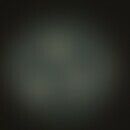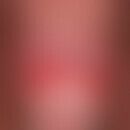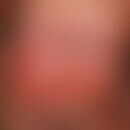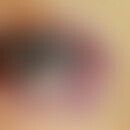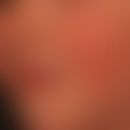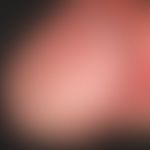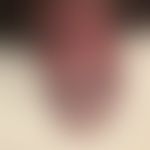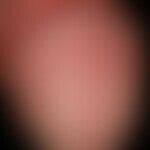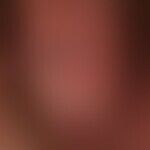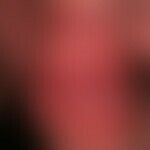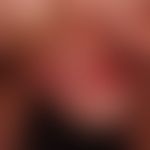Synonym(s)
DefinitionThis section has been translated automatically.
Infection of the glans and foreskin leaf (balanoposthitis) by yeast fungi, most frequently caused by Candida albicans.
PathogenThis section has been translated automatically.
Candida species, especially Candida albicans, more rarely Candida glabrata and other species (facultative pathogens)
You might also be interested in
EtiopathogenesisThis section has been translated automatically.
Prolonged local therapy with corticosteroid-containing or antibiotic ointments, inadequate or excessive hygiene, phimosis, lichen sclerosus, diabetes mellitus, endocrine disorders, immunosuppression A frequent source of infection is the sexual partner (colonisation of the vagina with Candida species).
ClinicThis section has been translated automatically.
Initially itching and slight, initially spotty redness.
Later development of a succulent, bright red, flat erythemawith a moist, shiny surface.
Then development of white, spot-like efflorescences, which can confluent to flat whitish coatings (thrush). If left untreated, delicate, whitish scaly ruffles form. In the further course of the disease swelling of the inner preputial leaf can occur. Phimosis can occur as a complication.
Well "cared for" Balanitis candidamycetica does not have any whitish deposits but only flat, moderately itchy erythema.
The clinical picture is extremely variable, vesiculo-pustular, diffuse erosive and eczematous forms are possible.
DiagnosisThis section has been translated automatically.
Differential diagnosisThis section has been translated automatically.
General therapyThis section has been translated automatically.
Thorough hygiene advice.
Washing mode: Use pure olive oil for cleaning, do not use soap, rinse if necessary, do not use washcloths because of risk of contamination. Treat underwear and towels as boil wash (wash at > 90 °C).
Clarification of possible basic diseases such as intestinal candidosis, diabetes mellitus, immunodeficiency diseases.
Ask for frequent intake of broad-spectrum antibiotics.
External therapyThis section has been translated automatically.
External antimycotics, e.g. 1-2% clotrimazole ointment (O/W emulsions or lotions), alternatively nystatin-containing external preparations (e.g. Candio-Hermal Softpaste, Multilind healing paste, nystatin-dequalinium chloride cream). Afterwards gauze strips are placed in the sulcus glandis and in the meantime baths with synthetic tanning agents (e.g. Tannosynt). In the case of highly inflammatory components, a combination preparation of glucocorticoid and antimycotic (e.g. Candio Hermal Plus) over a few days. Disinfecting baths, especially for accompanying bacterial infections, e.g. with aqueous potassium permanganate solution (light pink) or aqueous quinolinol solution (e.g. Chinosol 0.5-1:1000), and polyvidon-iodine ointment (e.g. R204, Braunovidon ointment). If necessary, brushing with aqueous dye solutions such as methylrosanilinium chloride solution or eosin solution ( eosin disodium solution, ethanol-containing 0.5/1/2%, eosin disodium solution, aqueous 0.5/1/2%). Cave! Do not apply dye solutions too frequently!
Notice! It is important to treat your partner as well!
Internal therapyThis section has been translated automatically.
LiteratureThis section has been translated automatically.
- Nyirjesy P et al (2013) Genital mycotic infections in patients with diabetes. Postgraduate Med 125:33-46.
Incoming links (15)
Balanitis diabetica; Balanitis plasmacellularis; Balanitis psoriatica; Balanoposthitis candidamycetica; Candidabalanitis; Candidiasis vulvovaginale; Clotrimazole ointment hydrophilic 2% (nrf 11.50.); Eosin disodium solution aqueous 0,5/1/2 % (nrf 11.95.); Eosin disodium solution, ethanol 0,5/1/2 % (nrf 11.94.); Nystatin dequalinium chloride cream; ... Show allOutgoing links (16)
Antibiotics; Antimycotics; Balanitis parakeratotica circinata; Balanitis plasmacellularis; Balanitis psoriatica; Candida albicans; Candida glabrata; Eosin disodium solution aqueous 0,5/1/2 % (nrf 11.95.); Eosin disodium solution, ethanol 0,5/1/2 % (nrf 11.94.); Erythema; ... Show allDisclaimer
Please ask your physician for a reliable diagnosis. This website is only meant as a reference.
